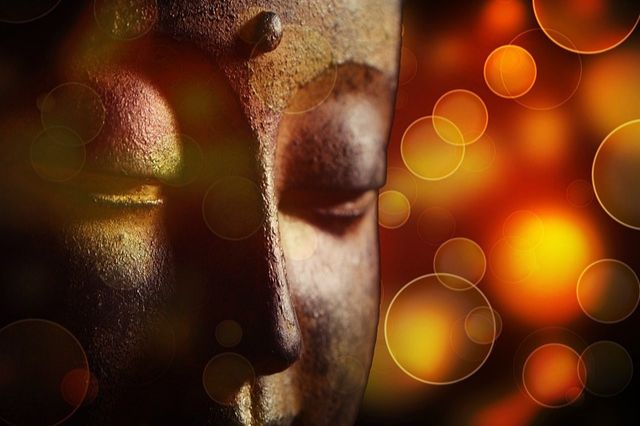How to Take a Spiritual Bath – the complete guide
Embark on a transformative journey with our guide on ‘How to Take a Spiritual Bath.’ Discover ancient wisdom blended with modern insights to rejuvenate your spirit. Unlock the secrets to emotional and spiritual healing through water, herbs, and mindfulness.
This step-by-step tutorial promises not just a bath, but a profound experience of renewal and clarity. Immerse yourself in the art of spiritual bathing and carry its serene essence into your everyday life. Begin your path to inner peace and rejuvenation now.
What is a Spiritual Bath and Why is it Beneficial?
Defining the Spiritual Bath: A Blend of Mind, Body, and Soul
In the realm of holistic well-being, a spiritual bath transcends the mere act of physical cleansing. This sacred ritual is a curated fusion of mind, body, and soul, aiming to restore balance, purge negative energies, and rejuvenate the inner self.
Unlike a conventional bath, a spiritual bath is an intentional act of healing, integrating various elements such as salts, herbs, essential oils, and crystals, each chosen for their specific vibrational qualities and healing properties.
A spiritual bath is more than a mere routine; it’s a meditative practice that requires mindfulness and presence. It’s an immersive experience that invites tranquility, allowing for a deep connection with one’s higher self.
As you prepare the bath, every ingredient is not just mixed but also charged with specific intentions, be it for cleansing, protection, or attracting positive energies. The warm water becomes a medium, not just to cleanse the physical body but to align the spiritual and emotional entities, creating a harmonious symphony of well-being.
This sacred ritual is an intimate dance of elements, a celebration of self-care, and a profound avenue for spiritual rejuvenation.
The Healing Properties of Spiritual Baths

Spiritual baths, a cornerstone in various cultural rituals, harness the intrinsic healing properties of water and natural elements, offering profound benefits for spiritual and emotional rejuvenation.
The Role of Water in Spiritual and Emotional Healing:
Water, a universal symbol of purity and life, plays a pivotal role in spiritual baths, serving as a medium for cleansing and transformation.
Its fluid nature is believed to absorb and wash away negative energies, facilitating a fresh start. In spiritual practices, water is not just a physical cleanser but also a spiritual conduit, offering clarity, healing, and renewal.
It mirrors our emotions, flowing and adapting, teaching us to let go and trust the process of healing and growth.
Understanding the Synergy of Natural Elements in Spiritual Baths:
Spiritual baths often incorporate a blend of natural elements like herbs, salts, flowers, and essential oils, each contributing unique vibrational energies. This synergy amplifies the bath’s healing potential.
For instance, sea salt is renowned for its grounding properties and ability to cleanse the aura, while lavender promotes relaxation and peace. These elements, in unison, create a holistic healing environment, engaging all senses and aligning the physical, emotional, and spiritual planes.
The combination is meticulously curated to foster balance, inner peace, and spiritual awakening, making every spiritual bath a deeply personal and transformative ritual.
Preparing for Your Spiritual Bath- Setting the Scene

Creating a Sacred Space for Your Spiritual Bath
To elevate your spiritual bath into a profound experience, it’s crucial to transform your bathing area into a sanctuary that resonates with tranquility and spiritual harmony.
Tips for Transforming Your Bathroom into a Sanctuary of Serenity:
- Cleanse and Declutter: Begin by physically cleaning your space, ensuring it’s free from clutter and distractions. A tidy, minimalistic environment promotes calmness and allows energy to flow freely.
- Set the Tone with Lighting: Soft, dim lighting, or the glow of candles, can significantly alter the ambiance, inviting a sense of peace and introspection.
- Incorporate Nature: Introduce elements like plants or flowers to create a nurturing, earth-connected atmosphere. Greenery not only purifies the air but also adds a touch of vitality and serenity.
Selecting Elements to Enhance the Spiritual Ambiance:
- Aromatic Elements: Utilize incense, essential oils, or scented candles to engage your sense of smell, a powerful trigger for memory and emotion. Scents like lavender for relaxation or eucalyptus for rejuvenation can greatly enhance the spiritual experience.
- Healing Sounds: Gentle, soothing sounds or a curated playlist of meditative music can aid in centering your thoughts and deepening your spiritual journey.
- Symbolic Items: Incorporate spiritually significant items or symbols that resonate with your intentions for the bath. This could be crystals for energy work, runes for guidance, or personal talismans that hold special meaning.
Creating a sacred space for your spiritual bath is about more than aesthetics; it’s about crafting an environment that supports your journey towards inner peace and spiritual alignment.
Each element should contribute to an atmosphere of tranquility, making your spiritual bath a truly transformative experience.
Choosing Your Ingredients: Herbs, Oils, and Crystals
When creating a spiritual bath, the mindful selection of herbs, essential oils, and crystals can transform your routine into a deeply personal and enriching ritual.
A Guide to Selecting Herbs, Essential Oils, and Crystals that Resonate with Your Intentions:
- Herbs: Choose herbs that align with your desired outcomes. For instance, lavender for relaxation, rosemary for clarity, or sage for purification. Research the spiritual properties of each herb to ensure they match your intentions.
- Essential Oils: Similar to herbs, essential oils carry specific vibrations and properties. For example, frankincense for grounding, jasmine for spiritual connection, or peppermint for rejuvenation. A few drops can greatly influence the bath’s energy.
- Crystals: Crystals act as conduits for healing energy. Select crystals based on their known attributes, like rose quartz for love, amethyst for spiritual growth, or black tourmaline for protection.
How to Blend and Use These Elements for Maximum Spiritual Impact:
- Creating Harmony: Ensure that the herbs, oils, and crystals you choose harmonize well together, both in intention and aroma. A cohesive blend amplifies the bath’s healing potential.
- Preparing Your Additives: For herbs, consider creating a bath sachet or using them in loose-leaf form. Essential oils should be mixed with a carrier oil before adding to the bath to prevent skin irritation.
- Setting Your Intentions: As you add each element to your bath, hold a clear intention or affirmation. This practice imbues the ingredients with your personal energy and purpose.
- Respecting the Elements: Understand that each element brings its own energy. For example, crystals can be placed around the tub or directly in the water, provided they are water-safe.
Remember, the potency of a spiritual bath lies not just in the physical properties of the ingredients but in the intention and mindfulness you bring to the preparation and immersion.
Each element is a sacred contributor to your holistic well-being, turning your bath into a sanctuary of spiritual rejuvenation.
The Art of Taking a Spiritual Bath: A Step-by-Step Guide

Cleansing and Grounding: The First Steps
In the sacred ritual of taking a spiritual bath, cleansing and grounding form the cornerstone, setting the stage for a transformative experience.
Techniques for Physical and Spiritual Cleansing Before the Bath:
- Physical Cleanliness: Begin with a traditional shower or bath to cleanse your body. This act is not just about hygiene but serves as a symbolic gesture of washing away the day’s physical and energetic debris.
- Smudging: Utilize smudging herbs like sage, palo santo, or sweetgrass. Light them and waft the smoke around your body and bathing area to cleanse the space energetically.
- Intentional Breathing: Use deep, intentional breaths to release lingering tensions or thoughts. With each exhale, imagine expelling negative energy, creating room for positivity and peace.
Grounding Exercises to Enhance Your Spiritual Connection:
- Barefoot Connection: If possible, stand barefoot on the earth (soil, grass, or sand) before your bath. This practice, known as “earthing,” helps in grounding your energy and connecting you to nature’s healing vibrations.
- Visualization Techniques: Visualize roots extending from your feet deep into the earth, anchoring you firmly to the ground. Feel the stability and nurturing energy of the earth filling you up.
- Mindful Meditation: Spend a few minutes in meditation, focusing on your breath and the present moment. Envision drawing in the earth’s energy with each inhale, providing strength and calmness for your spiritual journey ahead.
By integrating these cleansing and grounding practices, you prepare not just your body but also your spirit for the sacred experience of a spiritual bath, ensuring a deep, holistic cleansing and rejuvenation.
Immersing Yourself: Rituals and Practices
The act of taking a spiritual bath transcends mere cleansing, morphing into a profound ritual of rejuvenation and introspection.
Detailed Steps for Conducting Your Spiritual Bath Ritual:
- Preparation: Set a clear intention for your bath. Gather all ingredients – herbs, oils, crystals – and have them ready. Ensure the bathroom ambiance aligns with your spiritual intent, perhaps dimming the lights and playing soft, meditative music.
- Water Temperature: Fill your tub with warm water, a temperature that soothes and relaxes, yet invigorates your senses.
- Adding Ingredients: Slowly add your chosen elements to the water. As you sprinkle each herb, drop each oil, or place each crystal, focus on your intention, visualizing it being infused into the bath.
- Entering the Bath: Step into the bath slowly, attuning to the sensation of water enveloping your body. Close your eyes and take deep, intentional breaths, centering your spirit.
Incorporating Meditation, Affirmations, and Mindfulness in Your Bath:
- Meditative Focus: While in the bath, adopt a meditative posture. Focus on your breath, allowing the rhythm of inhalation and exhalation to anchor your thoughts.
- Affirmations: Recite affirmations that resonate with your intention. Speak them softly, letting the vibrations blend with the water’s energy.
- Mindful Absorption: Pay attention to every sensation – the water’s warmth, the herbs’ aroma, the oils’ texture. Let these sensations ground you in the present, deepening your connection with the spiritual essence of the bath.
By meticulously intertwining these practices, your spiritual bath becomes not just a cleansing ritual but a transformative journey, fostering profound harmony between your mind, body, and soul.
After the Bath: Integrating the Experience into Daily Life

Reflecting and Journaling Post-Bath
After emerging from the transformative embrace of a spiritual bath, the journey of introspection and self-discovery continues. Engaging in reflection and journaling can significantly enhance the spiritual experience, turning ephemeral moments into lasting insights.
How to Reflect on Your Spiritual Bath Experience:
- Embrace Stillness: Post-bath, wrap yourself in a comfortable robe or blanket, allowing the warmth and comfort to extend your meditative state. Find a quiet space where you can sit undisturbed.
- Mindful Breathing: Engage in a few minutes of mindful breathing to center your thoughts and anchor your reflections in the present.
- Revisit Intentions: Recall the intentions you set before the bath. Reflect on how the water, combined with the elements you chose, interacted with these intentions. Did you feel a shift in energy, a release, or an infusion of peace?
The Role of Journaling in Processing and Integrating Your Insights:
- Capture Immediate Feelings: Write down any emotions, thoughts, or physical sensations you experienced during and after the bath. Don’t filter or judge – let the words flow freely.
- Identify Patterns: Over time, revisit your journal entries to identify patterns or recurring themes. This practice can offer profound insights into your spiritual journey and personal growth.
- Plan Forward: Use your reflections to shape your future spiritual practices. If a particular herb, crystal, or affirmation resonated deeply, consider integrating it more fully into your routine.
Incorporating these practices of reflection and journaling turns a spiritual bath from a solitary ritual into a continuous journey of self-discovery and growth, embedding the ephemeral into the fabric of your spiritual evolution.
Maintaining Spiritual Clarity in Everyday Life
After experiencing the profound tranquility of a spiritual bath, the challenge often lies in carrying that serenity into the rush and hustle of everyday life.
This section offers practical tips and strategies to not only maintain the clarity achieved during your spiritual bath but also to ensure the continuation of its benefits through consistent spiritual practices.
Practical Tips for Applying the Peace and Clarity Gained from Your Spiritual Bath in Daily Life:
- Morning Rituals: Begin each day with a few minutes of the practices that resonated with you during your bath, be it meditation, deep breathing, or reciting affirmations.
- Create Physical Reminders: Place crystals or essential oils in your workspace or home to serve as tangible reminders of your spiritual bath’s tranquility.
- Mindful Breaks: Integrate short, mindful breaks into your day to reconnect with the calmness of your bath. Even a few moments of deep breathing or reflection can realign your thoughts with tranquility.
Continuation of Spiritual Practices to Sustain the Benefits of Your Spiritual Bath:
- Regular Spiritual Baths: Incorporate spiritual baths into your routine, allowing each bath to deepen your sense of peace and clarity.
- Journaling: Maintain a journal to track your spiritual journey, noting how each bath impacts your daily life and how the clarity gained evolves over time.
- Community Connection: Engage with a community that shares your spiritual interests. Sharing experiences and practices can reinforce your commitment and introduce you to new perspectives and methods.
By embedding these practices into your daily routine, the serenity experienced during your spiritual bath becomes more than a momentary escape—it evolves into a sustained state, enriching every aspect of your life with clarity and tranquility.







